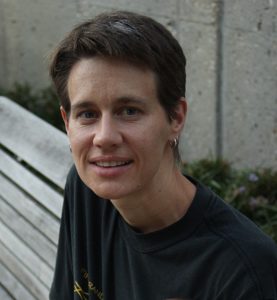Rachel Epp Miller lives in San Antonio, Texas. She is a graduate of Anabaptist Mennonite Biblical Seminary and has been pastoring at San Antonio Mennonite Church for the past 9 years. She delights in being a mom to her almost-two-year-old son, Ira as well as parenting and sharing life with her husband Wendell.
Advent, for me this year, is marked by the fresh memories of the birth of my son on Christmas Day, 2012. Because he held out in my womb for 20 days post-due date, I experienced Advent last year in more tangible ways than I ever had before—themes of waiting, anticipation, shifting expectations, frustration and hope blended together as my husband and I together wondered what (and when) this new “inbreaking” into our lives would bring.
The physical reality of post-due pregnancy and the emotional layers that engaged my imagination about upcoming labor and birth, becoming a mother and finally meeting this beloved little one, left me feeling throughout Advent less than spiritually grounded. I was so fully living within my body and its unfolding narrative that I hardly gave any thought to the coming Christ child or what God was doing in and for the world. We were, in a lot of ways, putting off Christmas until after the baby came (we never did get our house decorated because that, too, was going to happen in mid-December with a babe in our arms).
But then one morning, listening to the song “The Night of Heaven and Earth” by Garrison Doles, I was stopped in my tracks, recognizing that it is precisely in our physical bodies, in our deeply human experiences that heaven and earth meet. Suddenly all of my longings, fears, hopes, aches, questions were infused with a sense of the sacred and a sense of common ground with women from all times and places, including Mary (who also knew the physical and emotional ups and downs of pregnancy; who also, through her body, came to understand more deeply how God enters the world, upsets systems and invites our “yes” to participate). Waiting for the arrival of my son became the ground for awaiting the sacred to break into the world. Looking back at those days, I can see how Advent’s spirit was unfolding within my own body—the physical being exactly the place where Advent engages us, calls us to take notice and to act, to embrace flesh-blessed days (incarnation) as we wait and prepare a place for the new to be born.
Incarnation (the coming together of heaven and earth) is both the most profound mystery of Christian faith and of this Advent season, as well as the most ordinary reality and invitation that engages us. The sacred breaks into our lives all the time, but we are often blind to it. Christ’s coming challenges our inclinations to separate the sacred from the physical as he takes on flesh and shows us a deeply physical-sacred way to engage life and relationship, to challenge the powers and embody light in the darkness. Advent invites us to tune our eyes and ears, our hands and feet to sense the holy breaking into the ordinary and to be changed—not changed into something new per se, but drawn back, closer to who we really are, closer to the Source who created us and dwells in us, whose incarnation can continue to take on flesh in each of our embodied stories as we live into this mystery—as we open ourselves again and again to the new that is waiting to be born.
Rachel’s reflection originally appeared at the Femonite during Advent 2013. Reposted here with permission.


